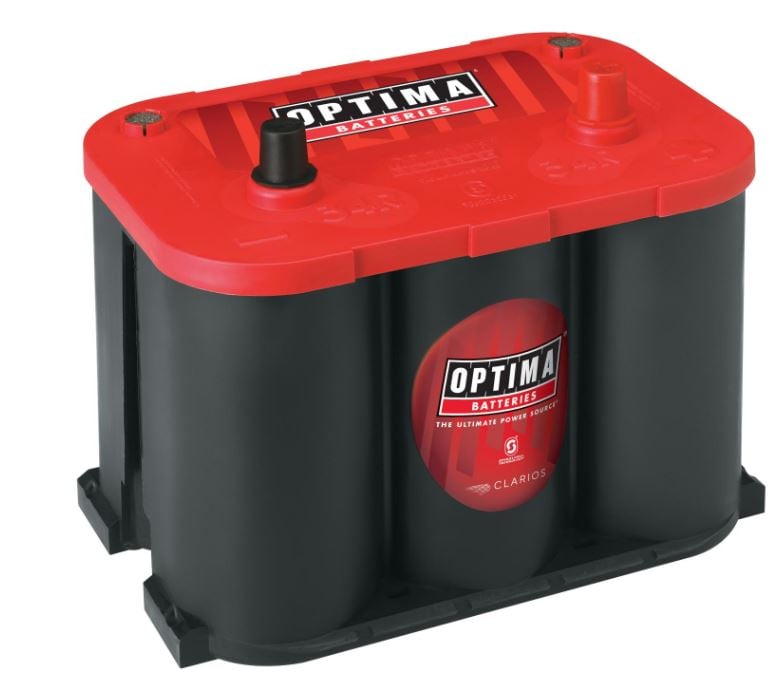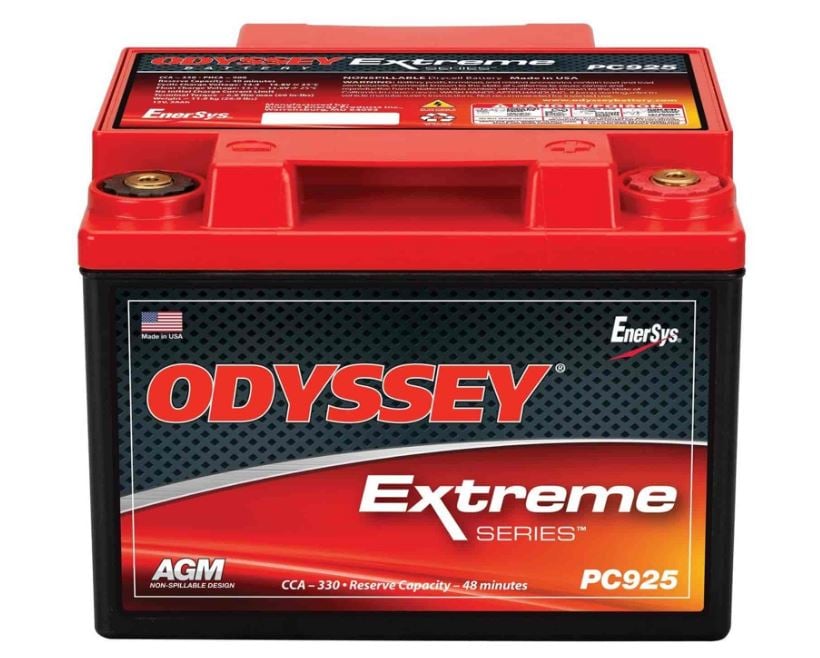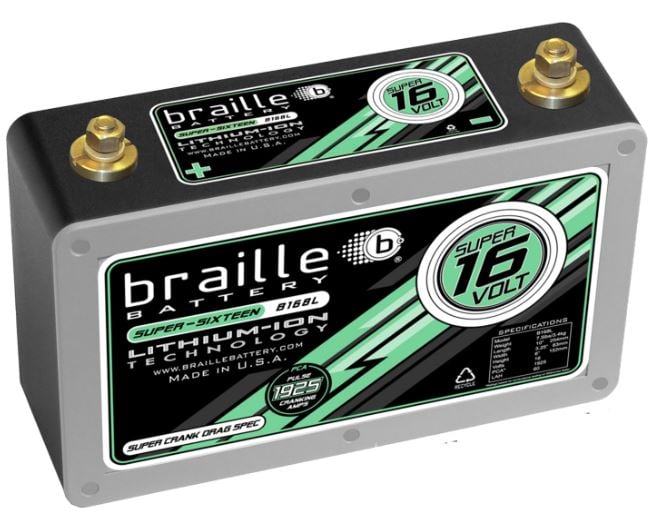Sign up now to join the JEGS email newsletter and be the first to learn about new products, special deals and e-mail only offers!



Selecting the right car or truck battery involves various considerations specific to your vehicle and usage. Factors like power-hungry accessories, extreme climates, and your vehicle's requirements all play a crucial role in determining the suitable battery.
Car batteries are essential for powering the starter, supplying electricity to various vehicle components like ignition, lighting, onboard systems, and are kept charged by the alternator while the engine runs. Typically, a battery's lifespan ranges between 4 to 6 years, subject to variations based on type and quality.
Three main aspects define a battery: physical size, cranking amp size, and terminal orientation. The physical size, referred to as the battery group size, must fit snugly onto the battery tray or within the box. The cranking amp ratings, either in cranking amps (CA) or cold cranking amps (CCA), cater to extreme temperature conditions ensuring reliable engine startup.
For vehicles with the original battery, referencing the label atop the battery for the group size is beneficial. It guides in determining the correct physical size. Also, checking the label for cranking and cold cranking amps is vital. Cranking amps are crucial above 32 degrees Fahrenheit, while cold cranking amps are vital in freezing conditions. If the original battery label is unavailable, measurements of the tray or box can assist in finding the right size using a battery group size chart.
Sign up now to join the JEGS email newsletter and be the first to learn about new products, special deals and e-mail only offers!

21 / 21R = 8-3/16 x 6-13/16 x 8-3/4
22F = 9-1/2 x 6-7/8 x 8-5/16
22HF = 9-1/2 x 6-7/8 x 9
22NF = 9-7/16 x 5-1/2 x 8-15/16
22R = 9 x 6-7/8 x 8-5/16
24 = 10-1/4 x 6-13/16 x 8-7/8
24F = 10-3/4 x 6-13/16 x 9
24H = 10-1/4 x 6-13/16 x 9-3/8
24R = 10-1/4 x 6-13/16 x 9
24T = 10-1/4 x 6-13/16 x 9-3/4
25 = 9-1/16 x 6-7/8 x 8-7/8
26 / 26R = 8-3/16 x 6-13/16 x 7-3/4
27 = 12-1/16 x 6-13/16 x 8-7/8
27F = 12-1/2 x 6-13/16 x 8-15/16
27H = 11-3/4 x 6-13/16 x 9-1/4
29NF = 13 x 5-1/2 x 8-15/16
33 = 13-5/16 x 6-13/16 x 9-3/8
34 / 34R = 10-1/4 x 6-13/16 x 7-7/8
35 = 9-1/16 x 6-7/8 x 8-7/8
36R = 10-3/8 x 7-1/4 x 8-1/8
40R = 11 x 6-15/16 x 6-15/16
41 = 11-9/16 x 6-15/16 x 6-15/16
42 = 9-9/16 x 6-15/16 x 6-15/16
43 = 13-1/8 x 6-7/8 x 8-1/16
45 = 9-7/16 x 5-1/2 x 8-15/16
46 = 10-3/4 x 6-13/16 x 9
47 = 9-11/16 x 6-7/8 x 7-1/2
48 = 12-1/16 x 6-7/8 x 7-9/16
49 = 15 x 6-7/8 x 7-3/16
50 = 13-1/2 x 5 x 10
51 / 51R = 9-3/8 x5-1/16 x 8-13/16
52 = 7-5/16 x 5-13/16 x 8-1/4
53 = 13 x 4-11/16 x 8-1/4
54 = 7-5/16 x 6-1/16 x 8-3/8
55 = 8-5/8 x 6-1/16 x 8-3/8
56 = 10 x 6-1/16 x 8-3/8
57 = 8-1/16 x 7-3/16 x 6-15/16
58 / 58R = 10-1/16 x 7-3/16 x 6-15/16
59 = 10-1/16 x 7-5/8 x 7-3/4
60 = 13-1/16 x 6-5/16 x 8-7/8
61 = 7-9/16 x 6-3/8 x 8-7/8
62 = 8-7/8 x 6-3/8 x 8-7/8
63 = 10-3/16 x 6-3/8 x 8-7/8
64 = 11-11/16 x 6-3/8 x 8-7/8
65 = 12-1/16 x 7-1/2 x 7-9/16
70 = 8-3/16 x 7-1/16 x 7-11/16
71 = 8-3/16 x 7-1/16 x 8-1/2
72 = 9-1/16 x 7-1/16 x 8-1/4
73 = 9-1/16 x 7-1/16 x 8-1/2
74 = 10-1/4 x 7-1/4 x 8-3/4
75 = 9-1/16 x 7-1/16 x 7-11/16
76 = 13-1/8 x 7-1/16 x 8-1/2
78 = 10-1/4 x 7-1/16 x 7-11/16
85 = 9-1/16 x 6-13/16 x 8
86 = 9-1/16 x 6-13/16 x 8
90 = 9-11/16 x 6-7/8 x 6-7/8
91 = 11 x 6-7/8 x 6-7/8
92 = 12-1/2 x 6-7/8 x 6-7/8
93 = 15 x 6-7/8 x 6-7/8
94R = 12-3/8 x 6-7/8 x 7-1/2
95R = 15-9/16 x 6-7/8 x 7-1/2
96R = 9-1/2 x 6-15/16 x 6-15/16
97R = 9-15/16 x 6-7/8 x 7-1/2
98R = 11-3/16 x 6-7/8 x 7-1/2
99 / 99R = 8-1/4 x 6-7/8 x 6-7/8
100 = 10-1/4 x 7-1/16 x 7-3/8
101 = 10-1/4 x 7-1/16 x 6-11/16
121R = 8-1/4 x 7 x 8-1/2
124 = 10-7/16 x 6-7/8 x 8-7/16
124R = 10-3/8 x 7 x 8-5/16
151R = 7-3/8 x 4-15/16 x 8-7/8
Selecting the ideal battery involves matching physical size, cranking amp ratings, and terminal orientation (top or side post and positive terminal placement). Understanding these aspects ensures a well-informed choice. Explore JEGS' extensive battery selection and consult our tech support for personalized guidance. With the right battery, ensure reliable vehicle performance under varied conditions.
Trucks demand specific battery considerations due to potential power requirements and diverse usage scenarios. Choosing the appropriate battery size, cranking amp ratings, and terminal orientation is critical for optimal performance in trucks. Understanding the implications of battery group sizes ensures a suitable replacement for truck batteries.
Group size refers to the physical dimensions of a battery, ensuring it fits the designated space in a vehicle. Each group size corresponds to specific measurements, guiding the selection process based on the available space and compatibility with the vehicle's requirements.





Leave a Reply